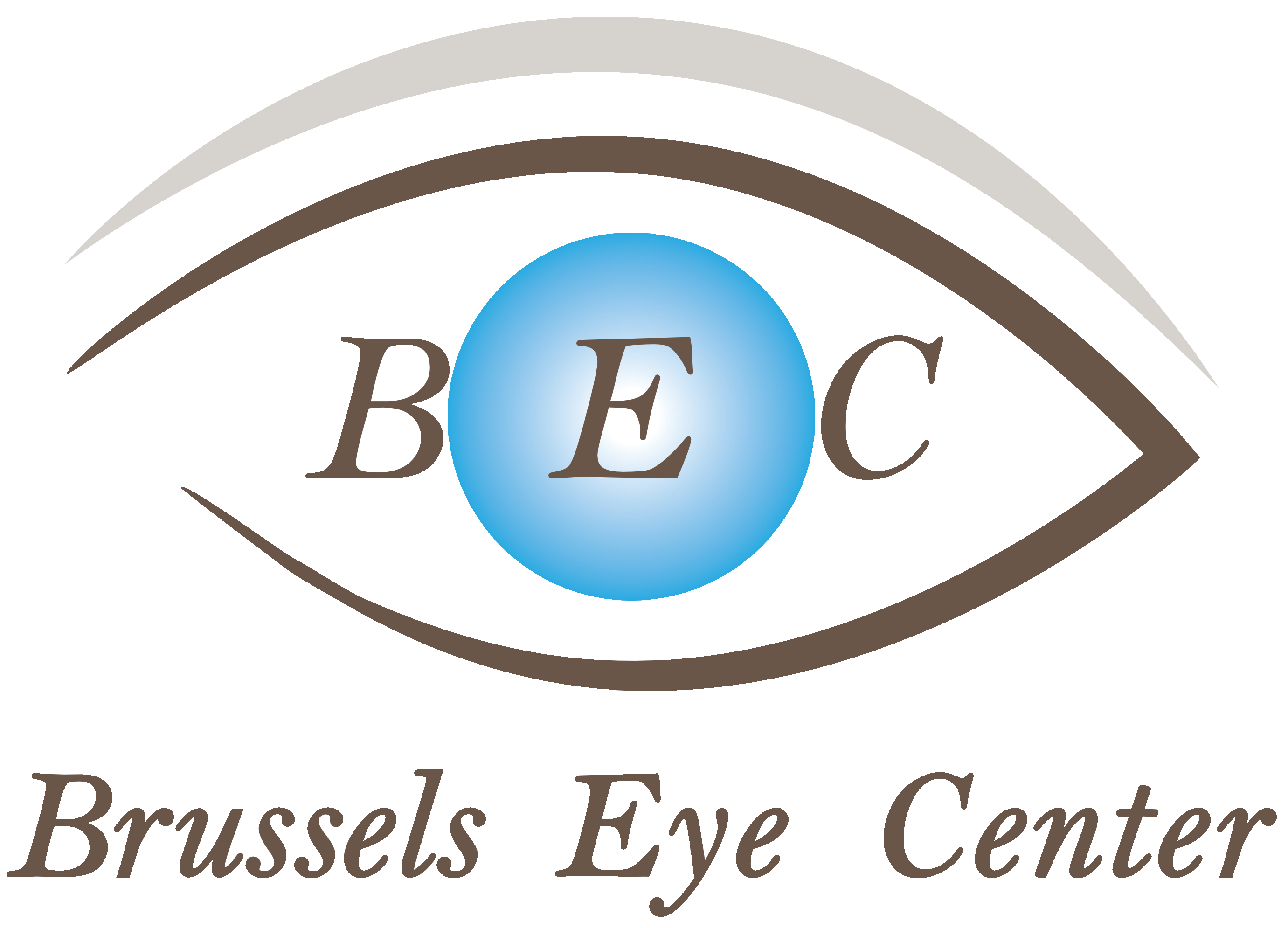Evolutive corneal disease inducing astigmatism, irregular astigmatism and sometimes myopia and reducing the best-corrected visual acuity. It occurs usually around 20 years old.
1. SEMI-RIGID, GAS PERMEABLE CONTACT LENSES:
These are contact lenses correcting corneal astigmatism and in some cases, irregular astigmatism. Some lenses are especially designed for keratoconus.
2. CORNEAL CROSS-LINKING :
It’s a technique used to freeze the cornea suffering from keratoconus. The principle is applying ultra-violets rays with riboflavin, to induce photo polymerisation of collagen.
Corneal Cross-Linking involves the application of riboflavin and ultraviolet light for a few minutes after mechanical or Excimer laser de-epithelialization of the cornea. The procedure is performed under topical anaesthetic drops.
Pain can occur during the first 24 to 48 hours.
In some cases, Corneal Cross-Linking is combined with surface treatment using a corneal topography-guided Excimer Laser (PRK or PTK): TOPO-Guided treatment.
Complications of Corneal Cross-Linking:
- Late epithélial corneal healing inducing blurred vision. An anti inflammatory topical treatent is then required, sometimes for few weeks, to achieve a clear vision.
- Infection (rare : 1/4000) requiring topical antibiotic treatment.
- Post operative pain (48h) is reduced by pain killer and bandage contact lens

3. INTRA-CORNEAL RINGS
Intracorneal rings are PMMA rings inserted into the posterior third of the cornea to flatten the most curved part of the cornea suffering from keratoconus with irregular astigmatism.
This surgical procedure is performed on an outpatient basis under topical anaesthetic drops and can be combined with Corneal Cross-Linking. It can reduce astigmatism and allow better visual function with glasses or contact lenses.
COMPLICATIONS OF INTRACORNEAL RINGS
- Moderate post operative pain 24H
- Halos and glare induced by the rings. This rare complication requires rings explantation if those visual signs are very disturbing.
- Ring’s dislocation with corneal injury due especially to eye rubbings that should be strictly avoided.

Intracorneal ring KERARING

KERARING
before - after
More info : www.mediphacos.com
IPHAKIC INTRAOCULAR IMPLANT
Phakic intra-ocular lenses like ARTISAN ARTIFLEX VISIAN ICL and TORIC VISIAN ICL are possible after stabilization of keratoconus by Corneal cross-linking with or without Intra Corneal Rings to treat myopia and residual astigmatism.
4. CAIRS : Corneal Allogenic Intrastromal Ring Segment
This technique involves inserting a ring of stiffened corneal segment from a human graft into the cornea to flatten the curved part of the cornea.
Its great advantage is the absence of halos and glare as described with PMMA rings (Keraring).
5. TOPOGRAPHY-GUIDED LASER SURGERY
This is an Excimer Laser procedure after Corneal Cross linking and/or corneal rings made of PMMA (KERARING) or corneal tissue (CAIRS), to regularize the irregular cornea.
6. CORNEAL GRAFT
It’s the last solution for keratoconus in case of no-stabilization and failure of other techniques like rigid contact lenses, cross-linking or intra-ocular lenses and intra-corneal rings.
The purpose of corneal graft is to exchange the abnormal cornea by the cornea of a donor. It can be penetrating deep or lamellar graft on a part of the center cornea.
Deep lamellar or penetrating keratoplasty need sutures on the cornea at the end of the surgery. Sutures can be removed only after one year.
Residual myopia and astigmatism after the removal of the sutures can be treated by Lasik and if they are very high, by Phakic intra-ocular lenses:

